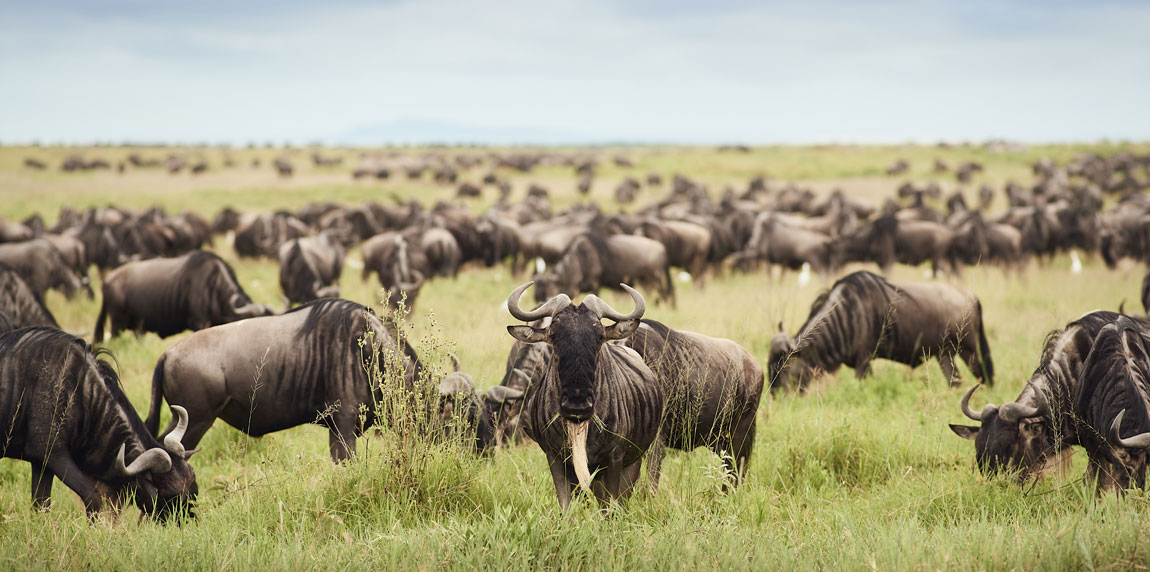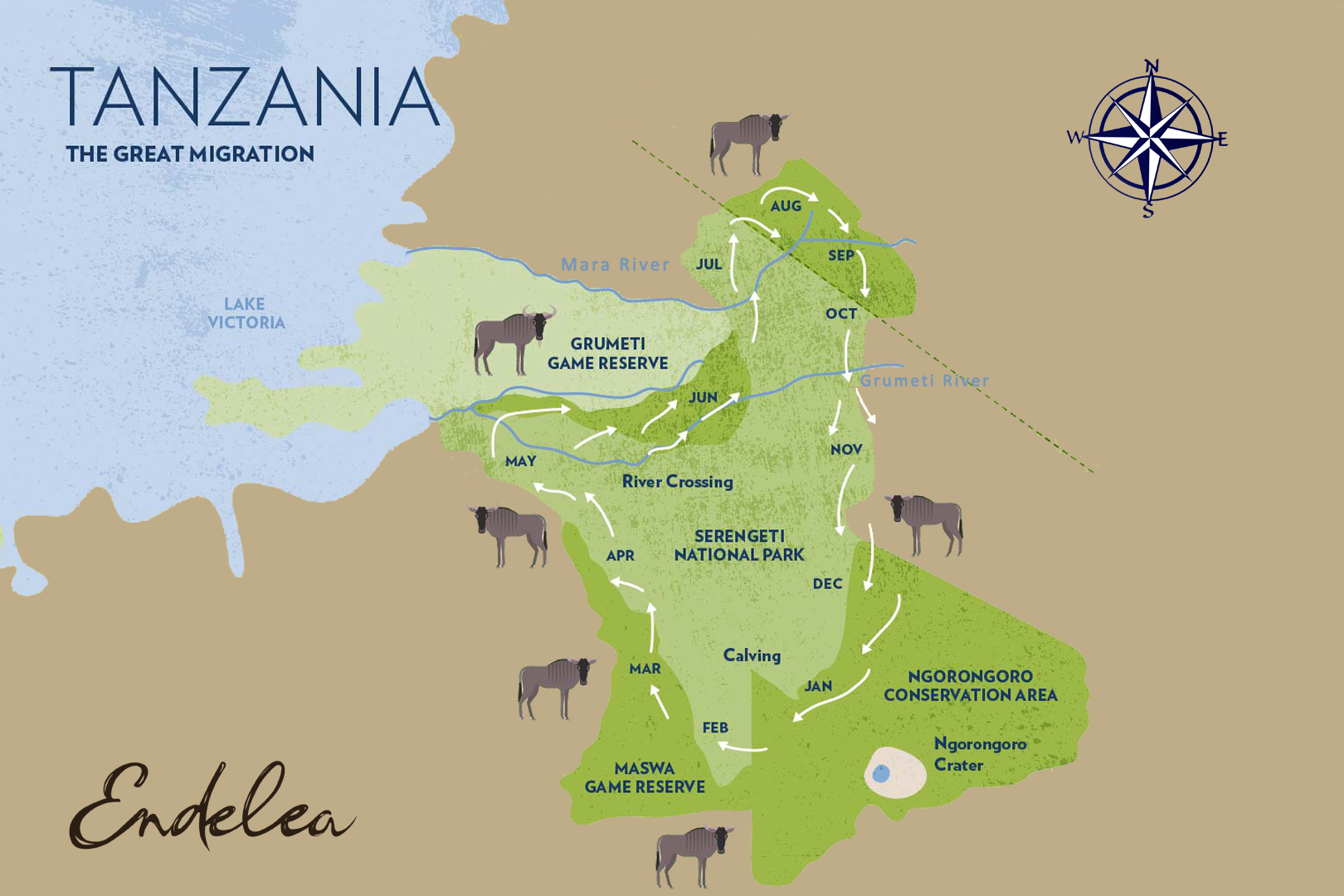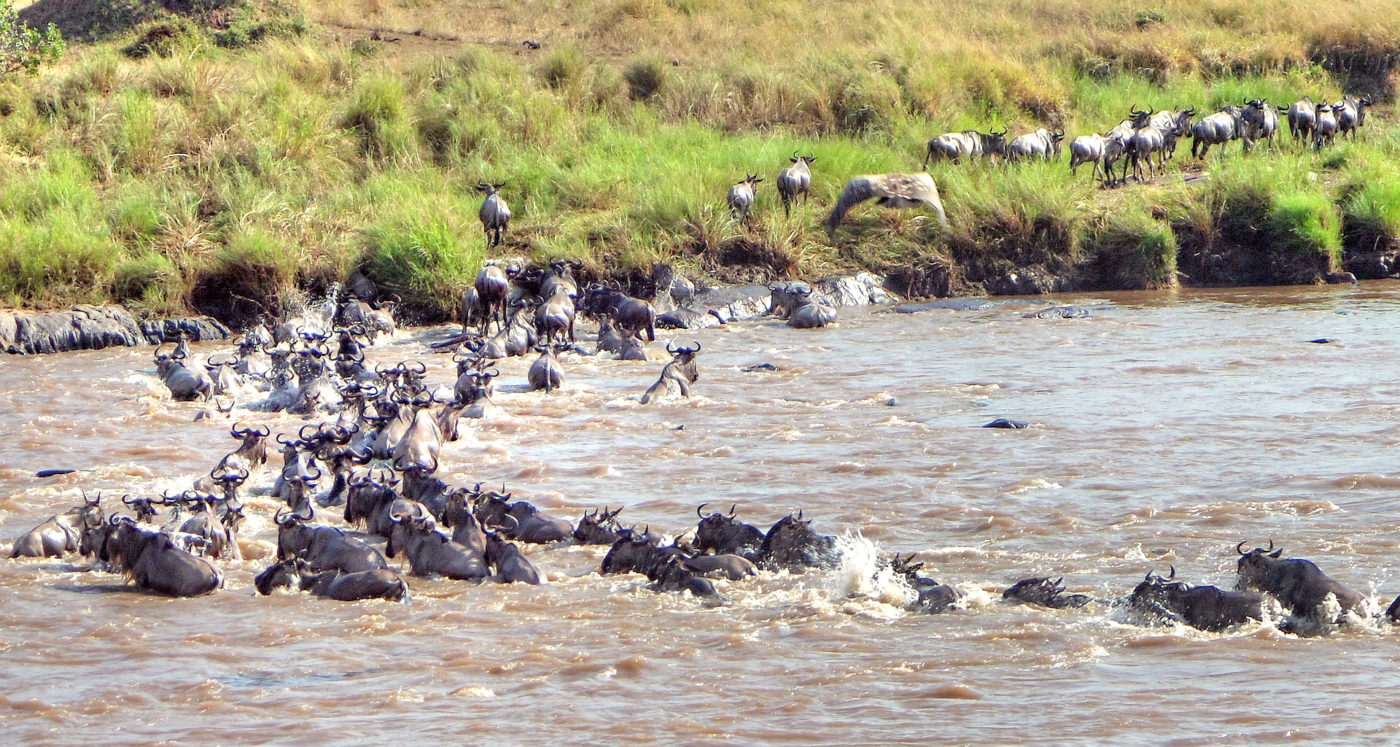Tanzania is home to one of the most incredible natural events on the planet — The Great Migration. This annual phenomenon, which involves millions of wildebeest, zebras, and gazelles, traverses the vast plains of the Serengeti National Park and the Maasai Mara in Kenya.
It is a breathtaking display of nature’s beauty and brutality, a spectacle that draws millions of tourists every year. But what makes the Great Migration so special, and why is it one of the most iconic wildlife events in the world?

The Great Migration is not just a simple migration; it’s a perilous journey that spans over 1,000 miles across the Serengeti ecosystem. It’s a continuous loop of birth, life, and death driven by the animals’ instinctual need for food, water, and breeding grounds.
The wildebeest, often considered the main players in the migration, number around 1.5 million, with zebras and gazelles joining in the trek. The migration usually begins in the southern Serengeti, where the animals give birth to thousands of calves in the short rainy season (around February).
After the births, the animals move northward towards the central and western Serengeti in search of fresh grass and water, following the rains that are essential to their survival.
As they move, they encounter numerous obstacles, including treacherous river crossings and the ever-present threat of predators, especially lions, crocodiles, and cheetahs. The predators have learned to time their hunt along with the migration, making it a brutal game of survival.

One of the most dramatic and harrowing moments of the migration occurs when the wildebeest and other herbivores reach the Mara River, which separates Tanzania’s Serengeti from Kenya’s Maasai Mara. This river crossing is a life-or-death moment. The animals must navigate swift currents, submerged rocks, and lurking crocodiles waiting to snatch any weak or lagging creatures.
The scene is nothing short of cinematic — herds of wildebeest charging into the water with a mix of courage and fear, as the roar of crocodiles echoes across the riverbanks. Many animals don’t survive the crossing, adding a layer of raw intensity to the journey.
However, those who make it to the other side are rewarded with lush, green pastures and continue their march toward the northernmost part of the Maasai Mara before the cycle repeats.

While the Serengeti is often seen as the heart of the migration, the Maasai Mara in Kenya is equally important. The Mara provides additional grazing areas and is the final destination before the animals turn back south. The region is a haven for predators, and the seasonal movement of the herds offers them an abundance of food.
The Mara River itself plays a significant role in this ecosystem, providing water for not only the migrating animals but also for resident wildlife, making it a crucial part of the annual journey.
The Great Migration is a symbol of nature's intricate design and a testament to the resilience of wildlife. However, it is also a reminder of the importance of preserving these ecosystems.
The Serengeti and Maasai Mara are vital to the survival of the migration and all the species that depend on it. Conservation efforts focus on protecting the migration routes, safeguarding water sources, and preventing habitat destruction. Without these efforts, the migration could be at risk, threatening the delicate balance of this unique ecosystem.
For those eager to witness the Great Migration in person, the best time to visit Tanzania is during the dry season, which runs from June to October. This is when the herds typically begin their journey north, and the river crossings reach their peak around July to September.
However, since the migration is a continuous process, visiting at different times of the year can offer varied experiences, from witnessing the calving season in the south to the dramatic river crossings in the north.